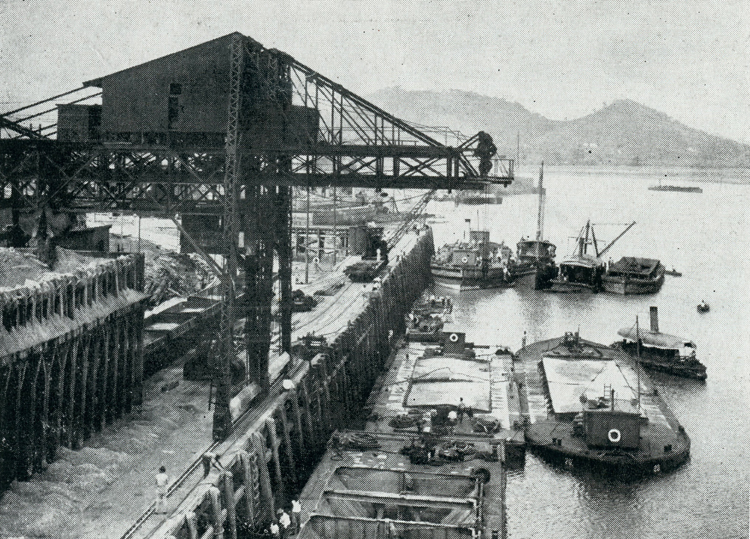|
I was reading through some old Panama Canal Reviews recently and came
across this very interesting article. In the past, I have posted
all kinds of information about the famous French Clapet barges that were
originally in service by the French and then extensively used by the
United States in the construction of the Panama Canal. Well here
is another story in the life of the clapet barge. This photo and
article are from the November 4, 1955 Panama Canal Review, Vol. 6, No. 4
Photo
caption:
BARGE
No. 20, which was sold last month after nearly a half century of Canal
service, is shown here on the right just after she and two other barges
arrived in Balboa after a 17,500-mile trip from Cristobal, via the
Straits of Magellan. The
photograph was taken in 1912.
Article:
A Magellan of the Canal's floating equipment was sold last month after
nearly 50 years of honorable Canal service. Barge No. 20, which once
made the trip from Cristobal to Balboa via the Straits of Magellan, is
being put into condition by its new owners, Luis Eduardo Barrera and
Cesar Torrientes, to haul cargo between Panama and the Darien.
The barge dates back to about 1908. For several
years it carried sand and crushed rock from the Nombre de Dios sand pits
and the Portobelo quarry to Gatun where the sand and rock eventually
became part of the Atlantic Locks.
About 1912, three old French clapets which were
used in a similar service on the Pacific side had to be replaced. Barge
No. 20 and two sister craft were selected as the replacements.
The Canal, of course, had not then been
flooded. Moving three steel barges, each about 160 feet long, across the
Isthmus of Panama meant that they would have to be taken apart and
shipped by rail. It was
finally decided that the most feasible method would be to tow the barges
around the tip of South America.
On February 11,1912, the tug Reliance,
a 134-foot craft designed for
deep-water work, left Cristobal with the barges in tow. Tug and tow were
manned by a crew of 34, under the command of R. C. Thompson, master of
the Reliance.
During
the first three days out of Cristobal they ran into heavy weather which
kept the decks awash. At times the towing machine at the stern of the
tug was submerged while the prow of the vessel was in the air. After
several days of this battering by waves and wind, the Reliance
and her triple tow put into Savanilla
Bay, not far from Portobelo, for repairs.
Good weather, fortunately, followed.
The 1,100-mile run from Para to Pernam-buco in Brazil, for
instance, took only nine days and five hours. Other than difficulties
with their supplies of coal and water, the Reliance
and her tow made the rest of the trip
without incident.
Finally, after a voyage of 126 days— during
86 of which the tug and the barges were actually under way—the craft
reached Balboa. It was the first time that a tow of this of this sort
had made a voyage of such length.
|


